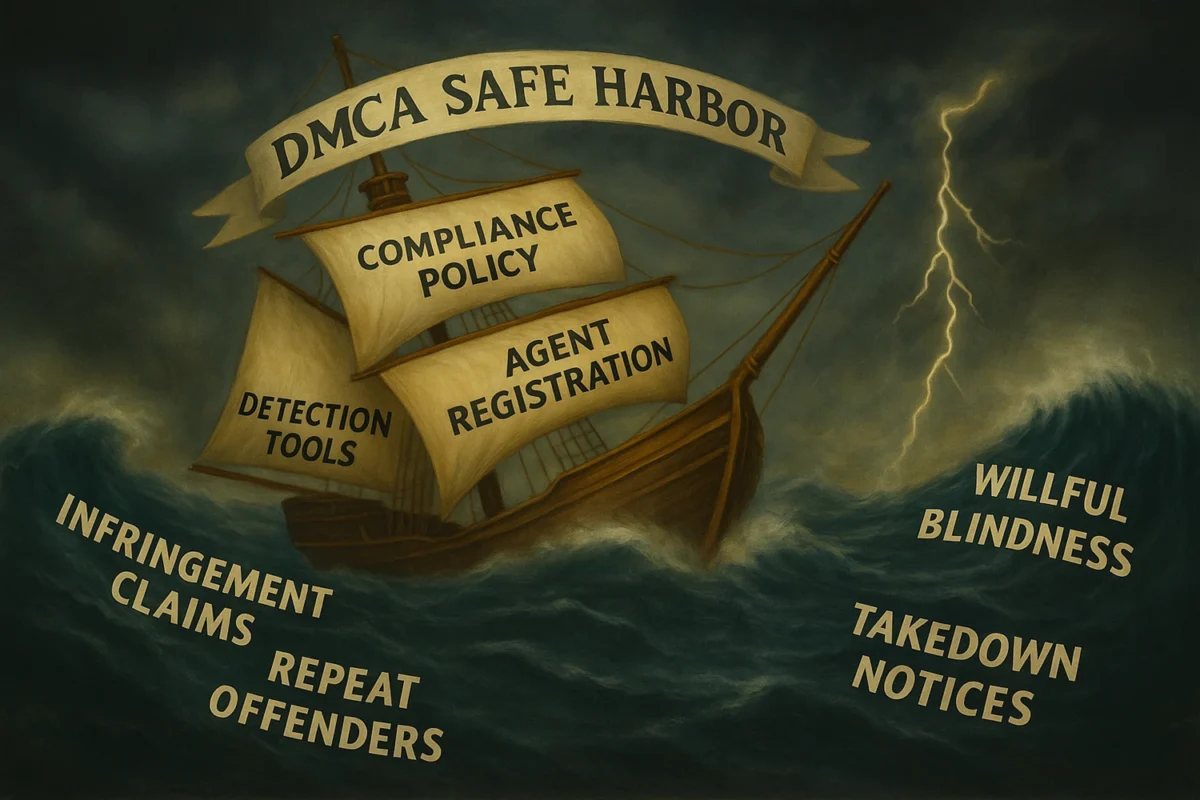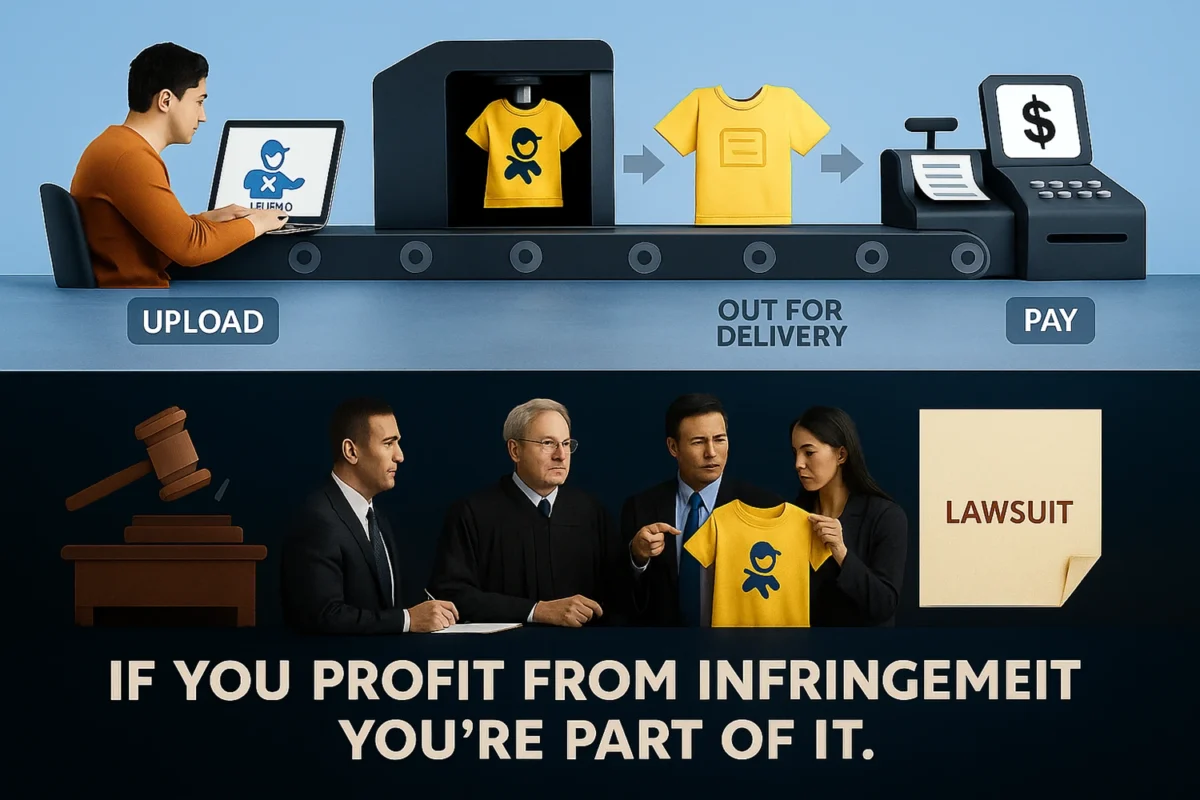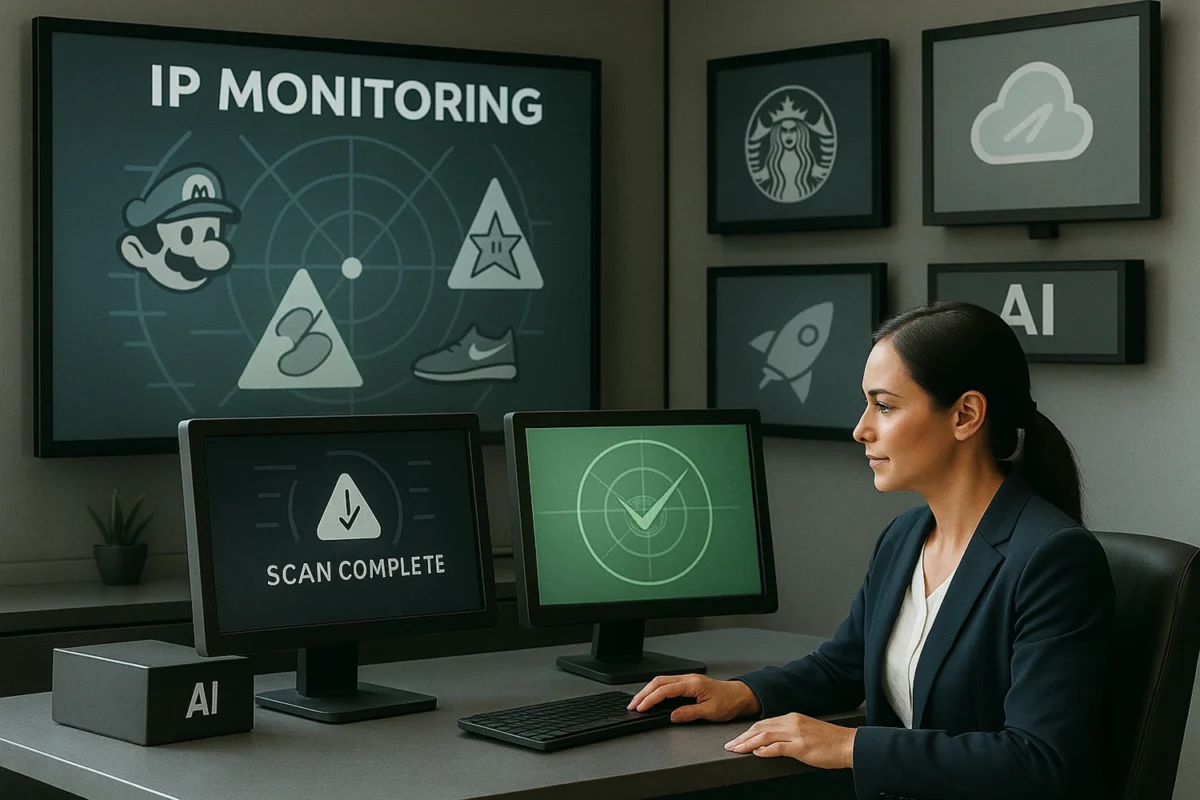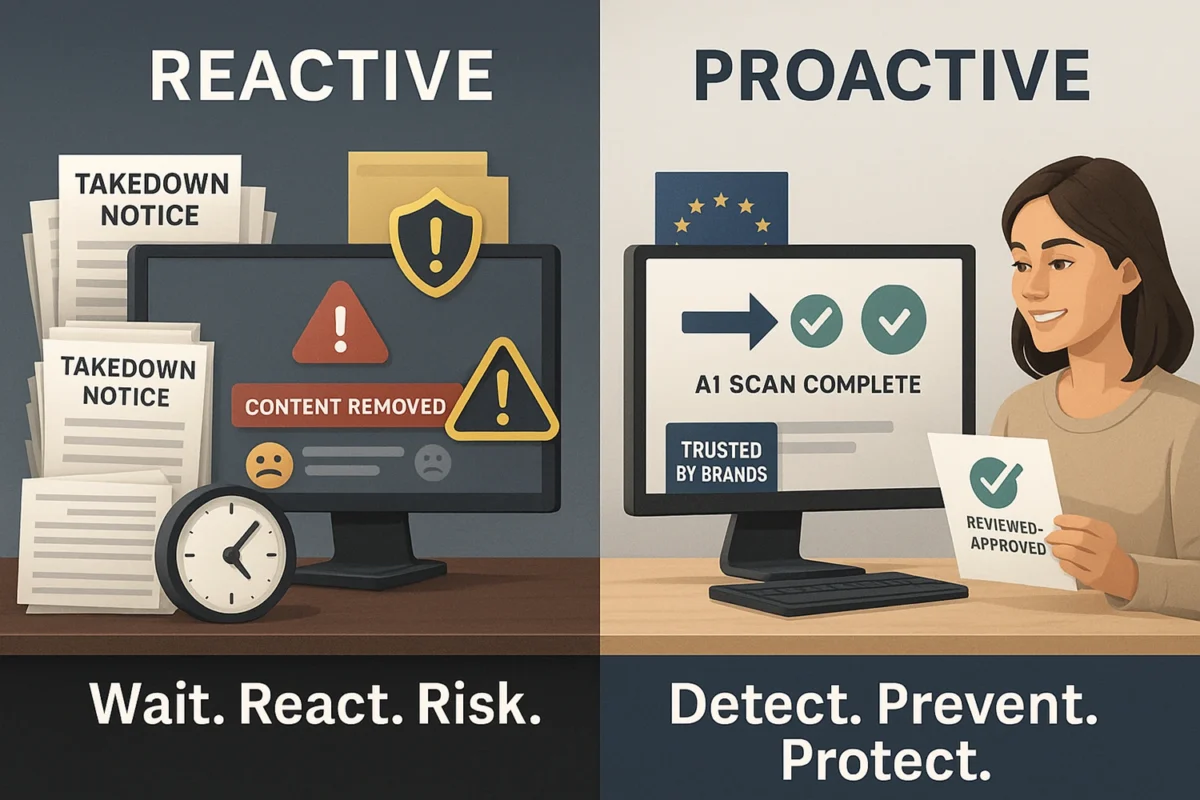What Is The DMCA Safe Harbor And Who Qualifies?
The term “Safe Harbor” gets thrown around a lot in legal, trust & safety, and content moderation circles – but many platforms either misunderstand it or think it offers more protection than it does.
If your platform hosts user-generated content (UGC), facilitates custom product creation, or sells print-on-demand (POD) designs, understanding the DMCA Safe Harbor is critical – not just for legal protection, but for building a defensible compliance program.
Here’s what it is, who qualifies, and how to make sure you’re actually covered.
1. What Is The DMCA Safe Harbor?
The DMCA Safe Harbor is a set of legal protections under the U.S. Digital Millennium Copyright Act (DMCA), passed in 1998. It shields qualifying platforms from being held financially liable for copyright-infringing content uploaded by users, so long as the platform:
- Didn’t know about the infringement,
- Acts quickly when notified, and
- Meets all other compliance requirements.
In short: It’s legal protection for platforms that do the right thing – even if they can’t catch every infringing upload immediately.
For a deeper look at the process, see DMCA 101: How the Safe Harbor Works for Platforms.
2. Who Qualifies?
Not every online service automatically gets Safe Harbor protection. You must fall into one of the DMCA’s recognized categories of “service providers,” which include:
- Hosting providers (e.g., social networks, marketplaces, POD platforms);
- Caching providers;
- Search engines/directories; and
- Internet access providers.
Most modern content platforms qualify as hosting providers, but that alone isn’t enough. You must also comply with specific behavioral and procedural rules to maintain your protection.
3. Main Requirements To Qualify
To benefit from Safe Harbor, your platform must:
- Lack actual or red flag knowledge of specific infringement
- Act expeditiously to remove or disable access to infringing material upon notice
- Designate and register a DMCA agent with the U.S. Copyright Office
- Implement and enforce a repeat infringer policy
- Not directly profit from infringing material where you have the ability to control it
- Provide a process for counter-notices when content is taken down incorrectly
Each of these is essential. As already noted in Notice-and-Takedown Systems: Legal Requirements & Best Practices, even small failures – like accepting vague takedown notices or not enforcing your repeat offender policy – can void your Safe Harbor protections.
4. Common Mistakes That Can Void Safe Harbor
Platforms frequently lose their Safe Harbor status due to avoidable errors:
- Failing to register or update their DMCA agent
- Ignoring or delaying removal of infringing content
- Not having a clear and documented repeat infringer policy
- Assuming automated detection systems alone fulfill legal duties
- Turning a blind eye to obvious violations (aka willful blindness – see IP Infringement Explained)
The takeaway: Safe Harbor is earned – not granted.
5. U.S. Vs. EU Regulation: Similar Goals, Different Tools
While the DMCA Safe Harbor is specific to the U.S., the European Union has introduced comparable – but stricter – frameworks.
Under the EU Digital Services Act (DSA) and Copyright Directive (Article 17):
- Platforms may be proactively required to prevent infringement.
- There is less tolerance for passivity or reliance on external complaints.
- Platforms must show they’ve taken “best efforts” to prevent access to infringing content.
In the EU, “wait and see” is no longer enough – platforms must take active steps to detect, remove, and prevent infringement, particularly for copyrighted music, films, and visuals.
If your platform operates in both the U.S. and EU, your compliance strategy must address both regimes.
Conclusion: Safe Harbor Is A Legal Shield – But It’s Not Indestructible
DMCA Safe Harbor provides vital protection for platforms – but only when you’ve earned it by following the rules.
To qualify:
- Know the legal requirements
- Avoid the common pitfalls
- Stay vigilant about enforcement
- Don’t just react – be proactive
And remember: Safe Harbor doesn’t cover trademark, design rights, or willful ignorance.
The platforms that survive legal scrutiny are the ones that go beyond the basics – with tools like Infringio, which proactively identifies IP risk before a takedown notice ever arrives.
Want to know if your platform is doing enough to qualify for Safe Harbor—and beyond?
Book a demo with VISUA today about proactive IP enforcement with Infringio.
Disclaimer: Not Legal Advice
This content is provided for informational purposes only and does not constitute legal or professional advice. The information reflects our understanding as of the date of publication and may not apply to every situation or jurisdiction. You should consult qualified legal counsel for advice tailored to your specific circumstances. Any actions taken based on this content are at your own risk. Neither VISUA nor its affiliates accept liability for any losses or damages arising from the use of this information.
Book A DemoRELATED
Redbubble, Teespring, and the Lessons of IP Enforcement Failures
Reading Time: 3 minutesPrint-on-demand (POD) platforms empower creators to design and sell products without holding inventory. But with that power…
BlogHow AI Is Changing the Game in IP Enforcement
Reading Time: 2 minutesIP enforcement used to be simple: But today’s infringement landscape – especially for POD and UGC-heavy platforms…
BlogThe Future of IP Compliance – Proactive vs. Reactive Models
Reading Time: 2 minutesFor years, most platforms treated IP compliance as a reactive function: But the market – and the…
Blog


